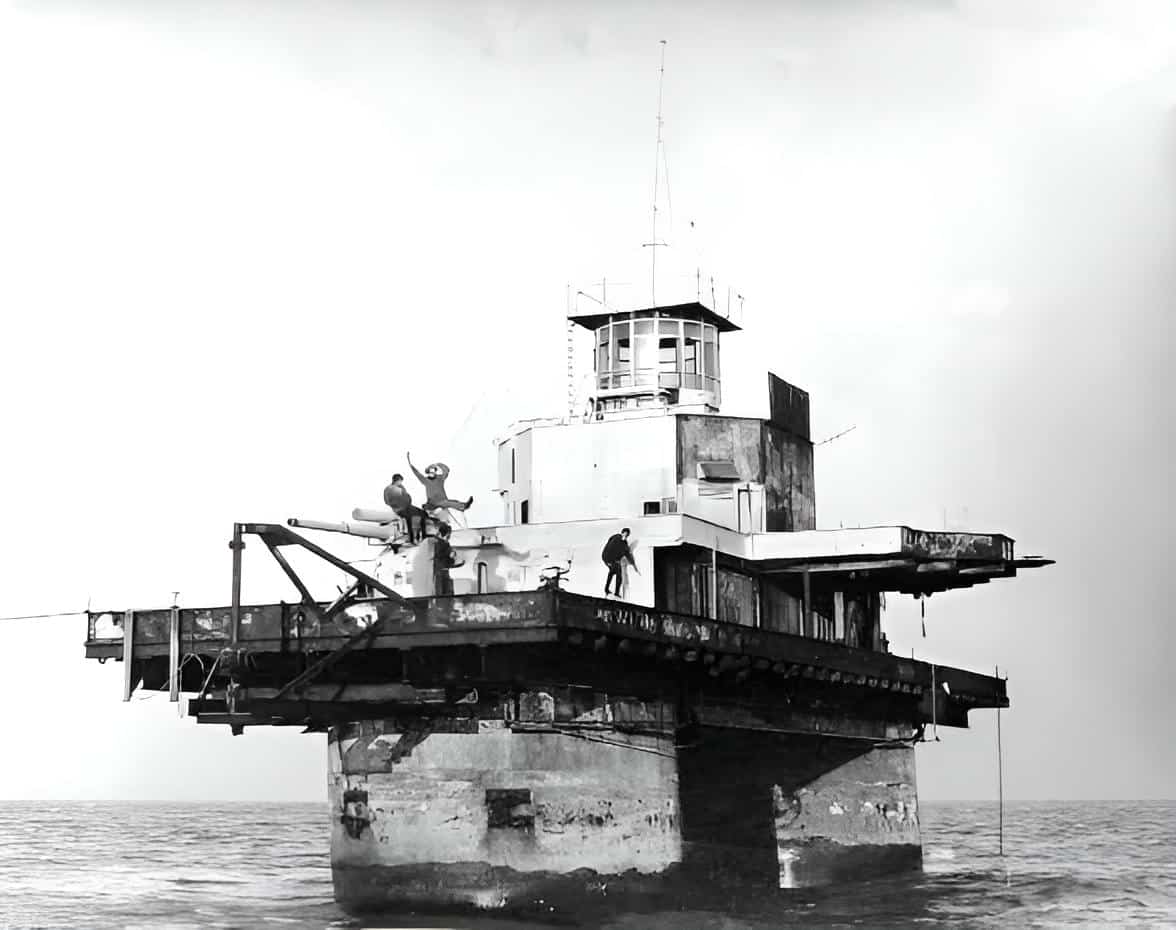Details: HMF Rough, HMF Sunk Head, HMF Knock John and HMF Tongue Sand, known as ‘His Majesty’s Forts’, were built by the Navy and originally had a complement of about 100 men who were assigned to them before deployment. These were designed as a reinforced concrete pontoon measuring 168 by 88 feet supporting two hollow cylindrical towers, 24 feet in diameter, which were topped by a gun deck, an upper deck and a central tower unit which controlled radar equipment. They were constructed in harbour and on completion were towed into position by three tugs and then sunk, leaving only the large diameter towers and platform showing above sea level. They were operable within 30 minutes of ‘launching’. The tower ‘legs’ were divided into seven floors, providing accommodation and storage areas. There was a steel framework at one end supporting a landing jetty and crane which was used to hoist supplies aboard. [Souce: SixtiesCity.com]
The second Naval Sea Fort HMF Sunk Head was placed approximately twelve and a half nautical miles off Harwich on June 1st 1942.
On 18th August 1967, the Naval tug Collie took a team of twenty Royal Engineers to the tower to commence demolition work. The superstructure was cut away with oxyacetylene torches and explosive charges. Three days later, 21st August, 2220 lbs of explosives were set, and just after 16:00 the fuses set. At 16:15 a vivid crimson flash was seen, followed by a large cloud of smoke. Large chunks of concrete flew into the air, some landing over half a mile away. The heat and force of the blast was felt on Walton-on-the-Naze beach, some fourteen miles away. A team of 20 Royal Engineers had demolished the upper sections of Sunk Head, in front of a specially invited audience of television and press reporters, with a blast that could be seen both from the Radio Caroline ship and by Roy Bates on Roughs tower six miles away.
All that remains today of Sunk Head tower are the stumps of the twenty-four foot diameter legs, which are used as unofficial navigational aids to shipping entering the Thames Estuary.
Offshore radio stations: Tower Radio 15th October 1965 till February 1966, Radio Tower 5th March 1966 till 12th May 1966. Tower Television with test broadcasts (there seemed to be only one report from Walton-on-the-Naze that a picture had been received).
Location: Thames Estuary (51.46.51 North 1.30.21 East)

